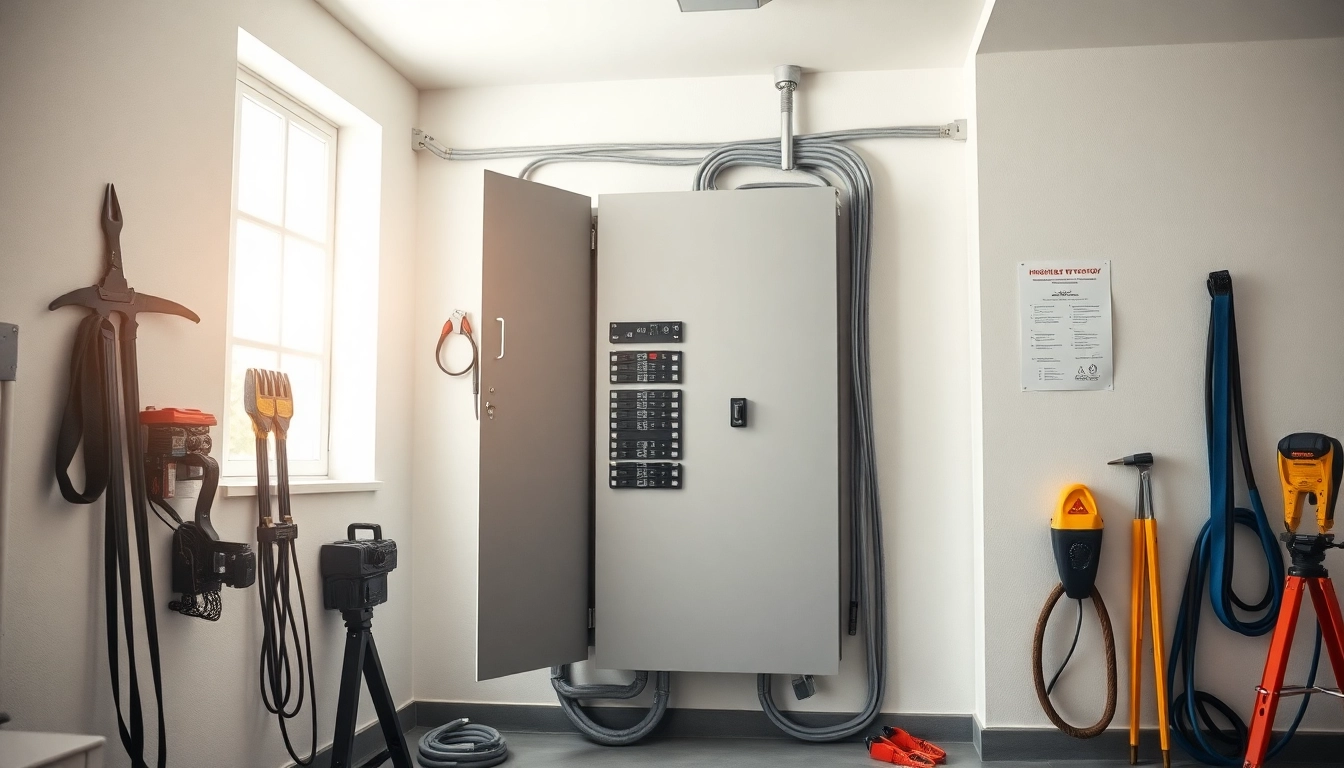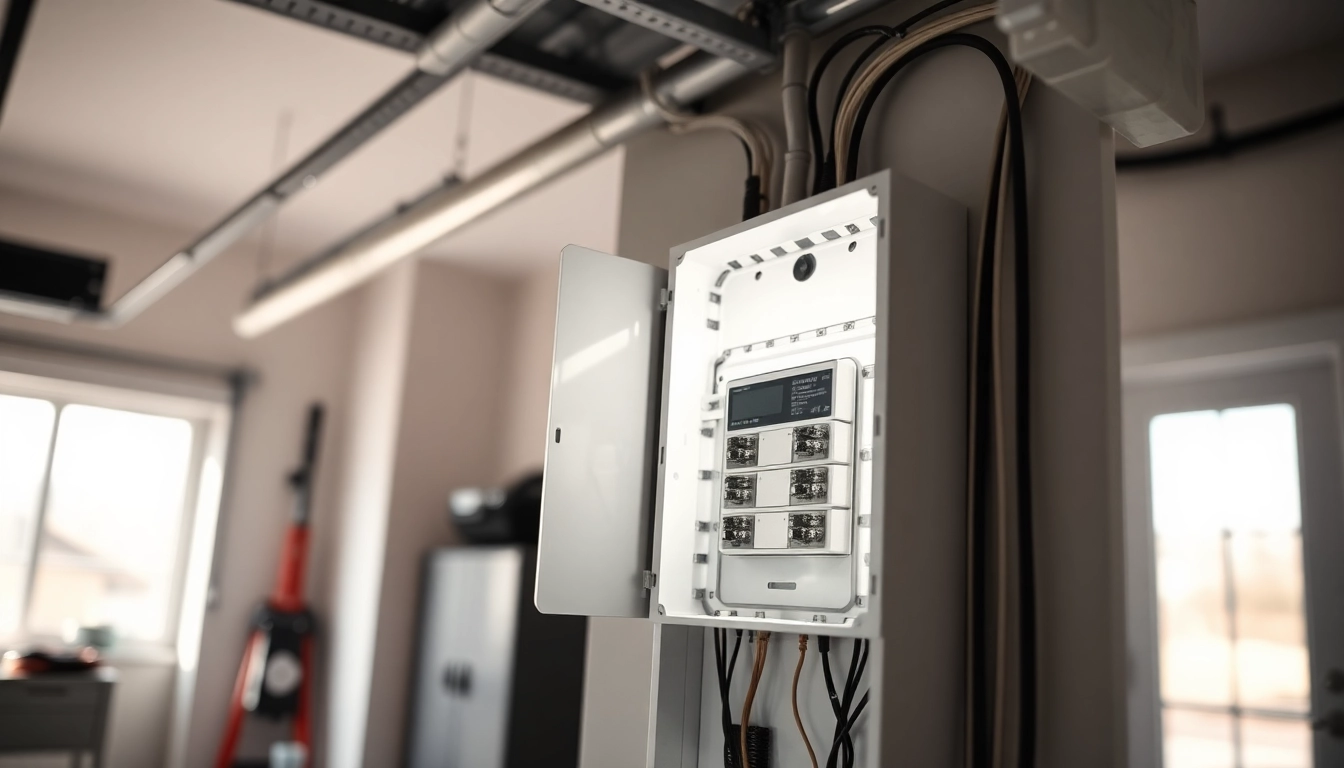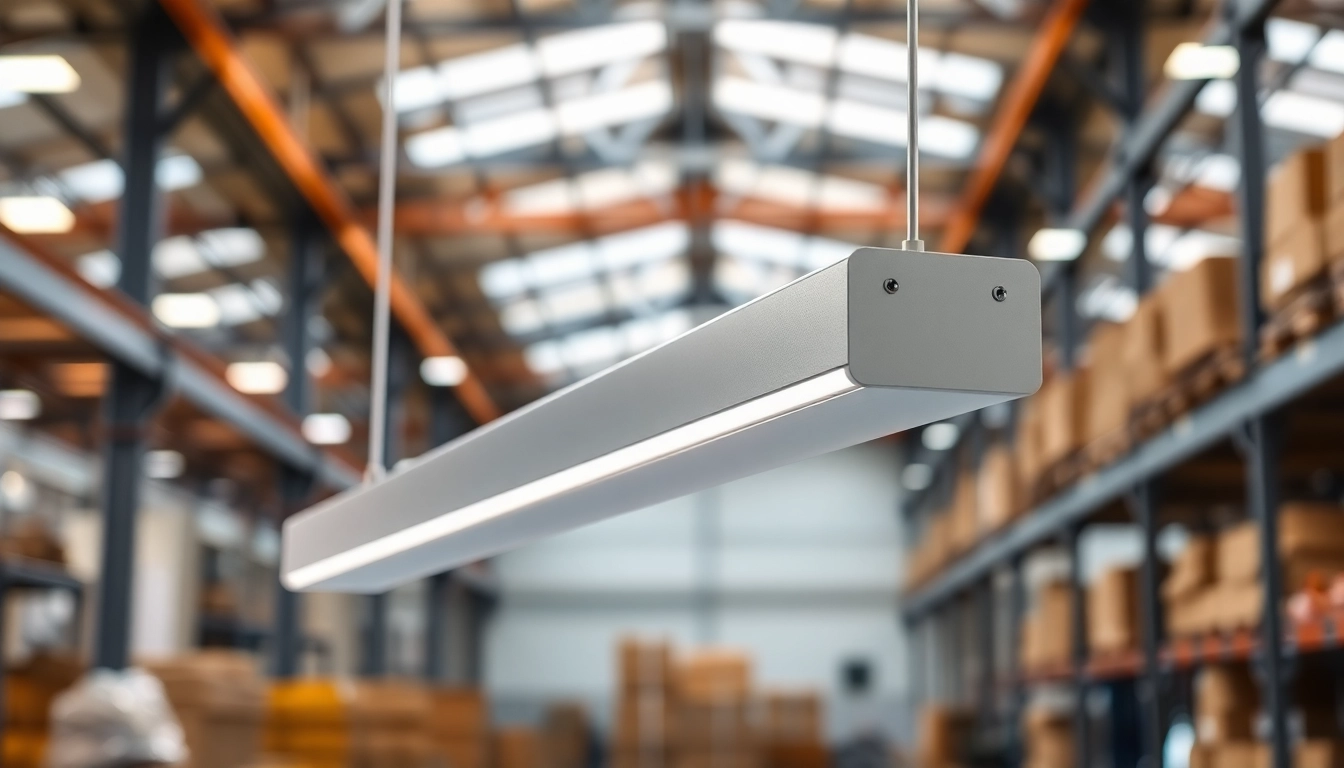
Understanding Electrical Panels
An electrical panel serves as the heart of your home’s electrical system, distributing electricity to various circuits and protecting them from overloads. Its importance cannot be overstated, as it plays a critical role in ensuring that the power flows efficiently and safely throughout your home. Understanding the essence, components, and functions of an electrical panel is paramount for any homeowner who desires a secure and efficient electrical system.
What is an Electrical Panel?
An electrical panel, also known as a service panel or breaker box, is a metal box usually mounted on a wall that holds circuit breakers or fuses. Its primary function is to distribute electricity from the main power supply to circuits throughout your home, allowing you to control the flow of electricity. This vital component acts as a crossroads for your electrical system, ensuring that electricity is properly distributed and maintained.
Components of an Electrical Panel
The key components of an electrical panel include:
- Main Breaker: This acts as the switch that controls the entire electrical supply to your home. It can shut off power to the entire house if necessary.
- Branch Breakers: These smaller switches control the flow of electricity to specific circuits in your home, protecting each circuit from overloads.
- Bus Bars: Metal bars within the panel that distribute electricity to the circuit breakers.
- Panel Cover: A protective door that keeps the internal components secure and prevents accidental contact.
- Grounding System: Essential for safety, this system directs electricity safely into the ground in the event of a fault or short circuit.
How Electrical Panels Function
The functioning of an electrical panel can be simplified into a few key steps:
- The electrical supply enters the panel through the main service line.
- The main breaker controls the flow of electricity, allowing it to be distributed to individual circuits through the bus bars.
- Branch breakers ensure that each circuit is monitored for overload; if more current than a designated limit flows through a branch, the breaker trips to prevent issues.
- Any faults in the system, such as short circuits, are detected by the breakers, which then cut off power to mitigate risks of fire or electrical shock.
Signs You Need to Upgrade Your Electrical Panel
Recognizing the signs that indicate an electrical panel upgrade is necessary can save you from potential hazards. Aging panels or panels that do not meet modern electrical demands can lead to safety issues, insufficient power distribution, or even electrical fires.
Common Symptoms of Overloading
When an electrical panel is overloaded, it can show several symptoms, including:
- Dimming or flickering lights, especially when using multiple appliances.
- Frequent tripping of breakers, which suggests that circuits are overloaded or that there is a fault.
- Warm or hot panel surfaces, which can indicate excessive load or malfunctioning equipment.
- An unusual burning smell or the presence of scorch marks around the panel.
The Role of Modern Electrical Demands
Today’s homes use significantly more electricity compared to those from a few decades ago. With the rise in technology—from multiple smart devices, home entertainment systems, to powerful kitchen appliances—older electrical panels often struggle to meet the increased demand. Homes that include electric vehicles or auxiliary heating systems can especially face challenges, necessitating a panel upgrade.
Signs of Wear and Tear
Considering the lifespan of an electrical panel, typically 20-30 years, signs of wear and tear may include:
- Physical damage to the panel or components and rust or corrosion signs.
- Breakers that fail to reset, indicating a deeper electrical issue.
- Any humming or buzzing noises emanating from the panel, which may indicate loose connections or faults.
Choosing the Right Electrical Panel
Selecting the appropriate electrical panel is crucial for your home’s safety and functionality. Factors to consider include the type of panel, its capacity, and the additional features it may offer.
Types of Electrical Panels Available
There are several types of electrical panels available on the market, including:
- Main Breaker Panels: These include a main breaker and are ideal for homes with a single supply line.
- Subpanels: Useful for homes with additional electrical demands, such as garages or outdoor spaces.
- Smart Panels: Innovations that allow for more precise control of electricity, helping to monitor and manage energy usage.
Factors to Consider When Selecting an Electrical Panel
When choosing an electrical panel, consider the following factors:
- Size and Capacity: Depending on your electrical load needs, panels come in various capacities (e.g., 100, 200, and 400 amps).
- Type of Circuit Breakers: Look for options such as GFCI or AFCI breakers for enhanced safety against ground faults and arc faults.
- Brand Reputation: Brands like Square D and GE are well-known for their durability and reliability, and you should compare their products based on their warranties and user experiences.
Comparing Brands and Models
Choosing the right brand and model involves researching various offers. Sound decisions can stem from comparing specifications, customer reviews, warranties, and overall construction quality. Some leading brands include:
- Square D: Renowned for its reliability and range of options suitable for residential homes.
- Siemens: Offers advanced technology and a wide range of sizes and specifications.
- Challenger: Known for affordable and robust options, particularly for older home upgrades.
Installation Process for Electrical Panels
The installation of an electrical panel should be handled appropriately to ensure its efficiency and safety. An improper installation can lead to issues down the line.
Preparing for Installation
Prior to installation, you should:
- Consult with a qualified electrician to assess your current system and determine your needs.
- Gather all necessary permits and ensure compliance with local regulations.
- Make an informed decision on the right panel type and capacity.
Steps to Install an Electrical Panel
Generally, the installation of an electrical panel includes the following steps:
- Turning off the power supply from the main source and removing the old panel.
- Connecting the grounding wire to the new panel, ensuring a secure connection with the incoming service grounding.
- Wiring the new breakers according to the specific load and demand calculations.
- Carefully securing the panel to the wall, ensuring that all connections are tight and insulated.
- Testing each breaker for functionality before sealing the panel cover.
Safety Considerations During Installation
Safety is paramount when dealing with electrical installations:
- Always wear appropriate personal protective equipment (PPE), such as insulated gloves and safety goggles.
- Double-check all connections for loose wires or improper attachments.
- Utilize a voltage tester to ensure that power is completely turned off before beginning any work.
Maintaining Your Electrical Panel
Proper maintenance of your electrical panel is essential for ensuring long-term functionality and safety.
Regular Inspection and Maintenance Tips
To keep your electrical panel in peak condition, consider the following maintenance practices:
- Schedule regular inspections with a licensed electrician to assess the condition and functionality.
- Keep the area around your panel clear of clutter and accessible for easy inspection.
- Inspect for signs of overheating, such as discoloration of wires, which could indicate load issues.
Understanding Local Codes and Regulations
Every region has specific electrical codes that must be adhered to when installing or upgrading an electrical panel. It is crucial to understand these codes to ensure safety and compliance. In the United States, the National Electrical Code (NEC) serves as a basis for many local regulations.
When to Call in Professionals for Help
If you encounter any unusual signs such as frequent breaker trips, burning smells, or persistent power surges, calling in a professional is crucial. Always trust licensed electricians for upgrades or repairs, as they equip the knowledge and tools needed to handle complex electrical issues safely.







